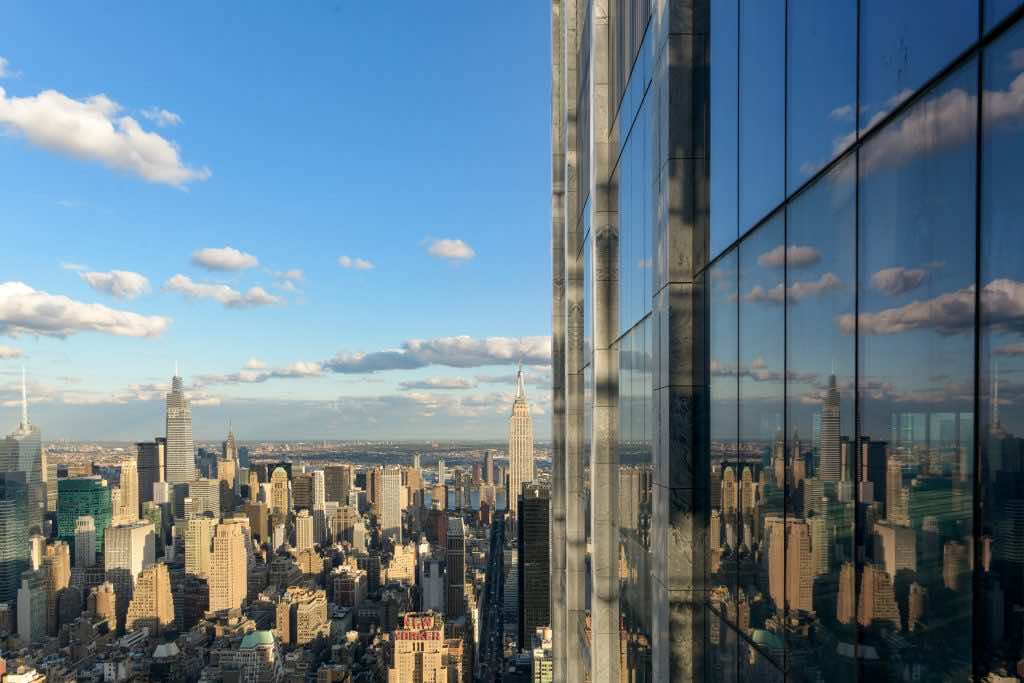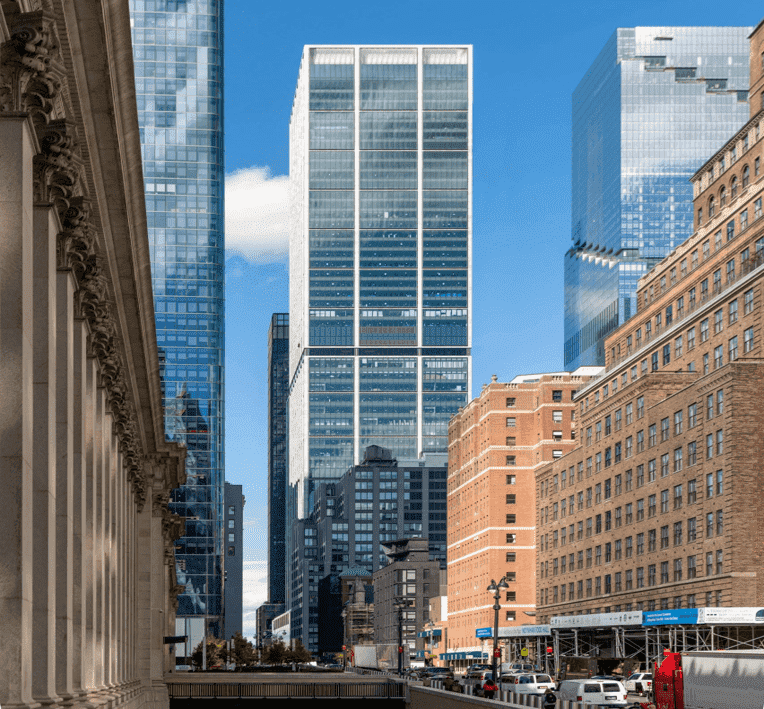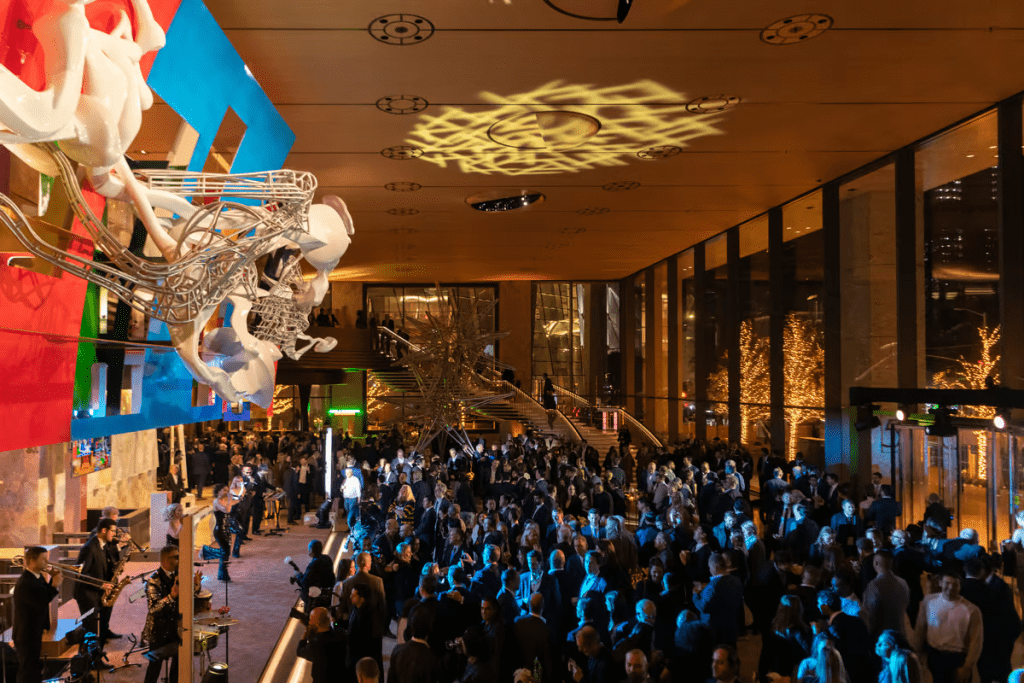Foster + Partners, a UK architecture firm, has constructed a supertall skyscraper in New York City as part of the Hudson Yards development in Midtown Manhattan.
The 1,011-foot (308-metre) tower, known as 50 Hudson Yards, has three million square feet (278,709 square metres) of office space, including offices for tech giant Meta and investment firm BlackRock.
The 78-storey tower is deemed supertall – a designation granted to structures between 300 and 600 metres tall and serves as a gateway to Hudson Yards, occupying a full block on the complex’s east side between 34th and 33rd Street.
“Our project is a response to the site within Hudson Yards, but its geometry also respects the wider context of the New York street grid,” said Foster + Partners founder Norman Foster.

50, the tiered envelope of Hudson Yards is complemented with a symmetrical facade of floor-to-ceiling glass. The Viscount white stone used for the platform and vertical bands that go up the facade was “specifically picked for the project,” according to the architects.
Foster + Partners claims that an “innovative” elevator strategy was adopted for the building’s core to open up floor plates on the envelope’s perimeter.
“The design utilizes conventional, double-decker and twin elevators for the first time in a New York commercial office building,” said the studio.

“The building’s primary structure has also been pushed outwards to create column-free floorplates, which support collaborative ways of working and can be easily reconfigured,” said Foster + Partner head of studio Nigel Dancey.
“The careful planning of the core and building section also allows various servicing options which futureproof the building.”

An outlet for a “purpose-made” tunnel connecting the building to the adjacent 34th Street-Hudson Yards MTA subway station was also made.
On the 32nd storey, there is a communal room with meeting and function spaces. In addition, the architecture company collaborated with designer Jamie Carpenter on a domed installation at the top of the tower designed to collect light during the day and illuminate the tower at night.
“Movement through the building is intuitive and efficient, with dedicated lobbies and private elevators for anchor tenants,” explained Foster + Partners.

“Visitors enter the tower through the activated street edges and traverse through the building from north to south. The design utilizes conventional, double decker and twin elevators for the first time in a New York commercial office building. Floor-to-ceiling glazing and generous ceiling heights allow natural light to flood the office spaces, enhancing employee well-being. “
50 Hudson Yards was one of the first in the United States to deploy engineering firm Despe’s Self Climbing Kocoon system, a scaffolding method designed to provide workers with more protection and flexibility.
Frank Stella, an American artist, created sculptural pieces for the public lobby. Furthermore, the first phase of Hudson Yards construction, master-planned by American architecture firm Kohn Pedersen Fox (KPF) and built by Related Companies and Oxford Properties, commenced in 2019.
A skyscraper by KPF and a supertall building by Danish studio BIG are among the other skyscrapers in construction by the New York studio Rockwell Group.
Source: Foster + Partners


